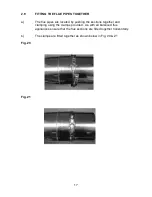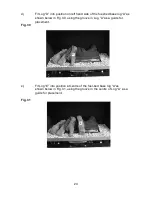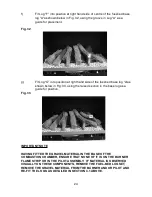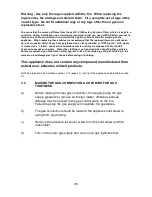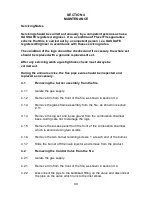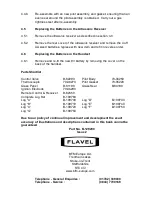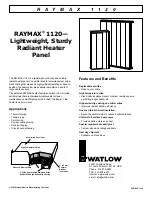
4.2.3
Loosen the pilot pipe, disconnect the ignition lead from the electrode
and disconnect the thermocouple from the pilot assembly.
4.2.5
Remove the 2 off fixing screws which hold the valve mounting plate to
its mounting bracket and lift the valve and its mounting plate away from
the combustion chamber.
4.2.6
Swap the valve mounting plate onto the new valve by unscrewing the
two M5 nuts and bolts holding it in position .
4.2.7
Re-assemble with new valve in reverse order.
4.3
Removing the Ultrasonic receiver.
4.3.1
Dis-connect the two pin plug which runs from the bottom right hand side
of the control valve to the ultrasonic receiver.
4.3.2
Lift the ultrasoic receiver out of its mounting cradle (attached to the L/H
leg of the combustion chamber).
4.3.3
Re-fit the new receiver in its cradle and re-fit the control wires to the
bottom R/H side of the control valve.
4.4
Removing the Pilot Assembly
4.4.1
Isolate the gas supply
4.4.2
Remove trim from the front of the fire, as shown in section 3.4
4.4.3
Remove the glass frame assembly from the fire, as shown in section
2.11.
4.4.4
Remove the log set and loose gravel from the combustion chamber
base, taking care not to damage the logs.
4.4.5
Remove the access panel from the front of the combustion chamber,
which is secured using two screws.
4.4.3
Loosen the pilot pipe, disconnect the ignition lead from the electrode,
and remove the thermocouple from the pilot body.
4.4.4
Remove the two fixing screws which secure the pilot assembly to the
pilot mounting panel in the base of the combustion chamber.
4.4.5
Remove the pilot assembly.
31

